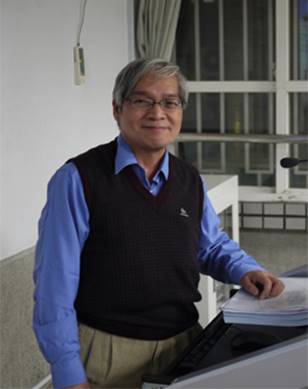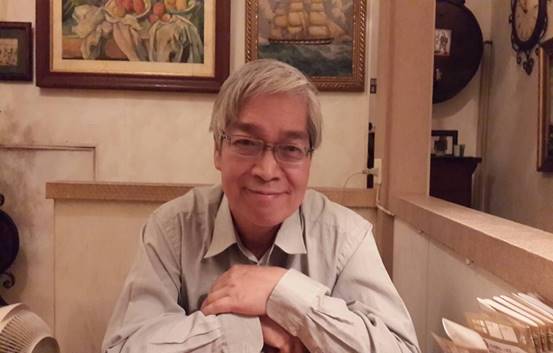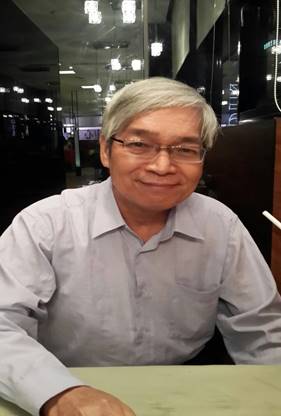International Journal of Emerging Technology and Advanced Engineering
Exploring Research and Innovation....
IJETAE Team thanks Prof. Huang Li-Jeng for his maximum contribution towards Research Community
Prof. Huang Li-Jeng

Huang, Li-Jeng, born at March 23, 1960, is the fifth child of a farmer family in Miao-Li County, in Northern Taiwan. He developed his interest on physics and mathematics during education in high school. He received the engineering training in the Department of Civil Engineering, National Cheng-Kung University (NCKU) from 1978 to 1982, and then got the master degree in 1984 from Institute of Civil Engineering, NCKU with the thesis entitled “Boundary Element Solutions for Transient Potential Problems.” He began his doctorate research and got his Ph.D. degree in 1991 from Institute of Aeronautics and Astronautics, NCKU with the dissertation entitled “Aero-elastic Control Synthesis of Airfoils Using Active Acoustic Excitations.” He was elected to became a member of Phi Tau Phi Scholastic Honor Society on May 30, 1992. During these years from master to Ph.D. his major professional research training lie on various numerical methods and interdisciplinary field covering with solid, fluid mechanics and control techniques.
He now serves as an Associate Professor of Department of Civil Engineering, National Kaohsiung University of Applied Science (NKUAS), Kaohsiung City, Taiwan since 1992. The major curricula he taught include: Advanced Engineering Analysis, Finite Element Methods, Application of Artificial Intelligence to Technologies of Disaster Mitigation, and Structural Dynamics, etc. Besides, his research interests range from structural, construction, earthquake, wind engineering to theoretical and numerical analysis of various engineering problems, e.g. (1) Computational Mechanics (Solids, Structures, Fluid Dynamics, Acoustics, etc.) and Applications in Engineering; (2) Application of Artificial Intelligence (Fuzzy Inference, Genetic Algorithm, Artificial Neural Networks, Expert Systems, etc.) in Engineering; (3) Structure-Fluid-Foundation Interaction; (4)Earthquake Engineering and Seismic-resisting Structures; (5) Wind Engineering; (6) Passive/Active Control and Dynamics of Structures; (7) Aero-elastic Instabilities of airfoils, wings and bridge-decks (Divergence, flutter, buffeting, vortex induced oscillation, etc.) (8) Developments of Finite Element Methods, Boundary Element Methods, etc in Civil Engineering; (9) Static, dynamic analysis of Structures embedded with Piezo-elastic materials; (10) Mechanics of Composite Materials.

He also acted as reviewer and chairman for domestic and international conferences and periodicals, such as Conference of Structural Engineering, 2010, 2011, 2012, 2013, 2014, Taiwan, R.O.C.; Conference of Aeronautical Technology, Taiwan, R.O.C.; Transaction of Air Force Institute of Technology, Taiwan, R.O.C.; IWCEA 2014 Conference, Turkey ; Journal of Technology, Taiwan, R.O.C. etc.
He had published more than 80 technical papers in conferences and Journals (including 20 published in IJETAE and IJRDET in 2014), domestic or international, in Chinese or English, respectively. He had also published three technical books: Mechanics of Materials, 1998; Theory and Applications of Fluid Mechanics, 2000; Introduction to Theory and Practice of Debris-Flow Hazards Mitigation, 2002; all written in Chinese and published by Chuan-Hwa Publishing Ltd, Taiwan, R.O.C. In addition he had published a volume of poetry in Chinese originating from his artistic interest entitled “Pondering in a Place.”

Recently his research interest reflected on the published papers on IJETAE and IJRDET during July to December, 2014, and some international conferences: (1) Applications of App Inventor 2 to Design of Android Apps for Professional Usage; (2) Application of AHP to Risk Assessment of Various Disasters; (3) Application of Fuzzy Inference to Safety and Risk Assessment; (4) Seismic Response Analysis of Various Structures Using SAP2000, ANSYS, etc.; (5) Engineering properties of Controlled Low-Strength Materials (CLSM) and Numerical Analysis of Backfilled Excavations Using CLSM; (6) Development and Applications of Multi-phase Mixture Theory of Debris-Flows, etc.
In the future he will continue his enthusiastic research on various topics in civil engineering (structural, geotechnical, constructional and risk assessment of natural disasters) and publish more research works, personally or with corporation.